What I love about whole class reading instruction is that it provides all students with a shared experience and shared book. Teachers have the opportunity to model skills and create a dynamic level of enthusiasm and engagement with the entire class.
We have to remember, however, that whole class instruction does not simply mean providing students with given information; whole class reading instruction is guiding, mentoring and modeling for students.
Students still need to be collaborating, thinking and discovering. They are not taking notes, not working on fill in the blanks and not listening to the droning voice of their teacher for minutes on end. Also, remember that independent reading is the foundation of balanced literacy and it should be at the forefront of your mind when planning both small group instruction and whole class instruction.
In addition to modeling concepts and ideas during shared readings, I think whole class reading instruction is most beneficial in both reading and writing workshops through authentic projects or problems.
Whole Class Reading Instruction: What Is Reading Workshop?
Both reading and writing workshops contain three basic parts: the mini lesson, the workshop and sharing.
The Mini Lesson
Mini lessons are a time for teachers to teach a standard, model a strategy or demonstrate a skill. They are brief; the majority of the class period should consist of the students actively applying the mini lesson.
For example, if I were teaching the concept of text features, I might gather the students around me and share a graphic novel, and ask them how this book looks different from or similar to the books they are reading independently.
This is from Bio-Graphics Clara Barton (Grades 3-6) by Joeming Dunn
Students will then guide the discussion.
They may notice that dialogue is written in speech bubbles while their independent reading book uses quotation marks. They may see four to five scenes on one page, instead of one. They may also notice that narration is placed in boxes, when maybe their chosen book has paragraphs or a couple sentences under one picture. They will most likely notice the detail in the illustrations and not within the words.
As a focal point, you might want to look at text features. This book, for example, has a timeline, a table of contents, further reading suggestions, a glossary and an index.
The Workshop
Workshops are the time to have students read in class. Research backs that time spent reading in class “contributes significantly to growth in reading achievement” (Taylor, Frye, & Maruyama, 1990). When you read with your students and let them read independently during class time, you demonstrate the value of literacy and build habits through consistency – reading time should be the most important part of the day.
After the minilesson, use conference time for a few minutes of one-on-one time with each student while the rest of the class reads independently. This is a time to connect a lesson with the book they are reading independently. It is a time to model how to identify unknown words and the perfect time to listen for fluency. It’s a time to talk about the plot. It’s a time to model creating inferences. It’s a time to ask about the structure of their book.
It’s not a time to dish out prepared questions. It’s not a time to quiz for comprehension. It’s not a time for negativity. We want students to enjoy these conferences and to have a safe place to share their challenges, successes, likes and dislikes.
No lesson plan needs to be created. Pull in standards and topics you have recently taught and use one of them to make a connection to the text the student is reading. It shouldn’t be a checklist in which you cover skills one at a time. It’s a spiral — simply continue to check in with the students on the books they have chosen and skills you want them to apply.
When students know you will be conferring with them, they will hold you accountable. Some teachers give students a heads-up a day in advance. Some teachers are more spontaneous and will confer with those students who they feel need a little extra attention. And still others adhere to a schedule and a chart. This is one of those times where a teacher’s personal preference and the class’s specific needs come into play.
Records should be kept as well — not necessarily every discussion you have, but often. I preferred to use a combination of formal conferences scheduled ahead of time with notes and progress documented, and quick check-ins that were casual and more personal.
Sharing
Sharing is often left off for lack of time, but in actuality it’s so important to the reading culture of the classroom and should be made a priority.
Students learn so much from each other through sharing. They are not only held accountable, but they also provide insights and ideas to their peers. Depending on time, sharing might consist of simply sharing a text feature with a neighbor. Sometimes sharing might consist of showing that a book does not having any text features at all!
Sharing can also be more elaborate. I used a share chair – a simple stool that was used only for the purpose of sharing from the books we were reading. On some days, students could volunteer to share, other days I might choose students spontaneously, or draw names written on Popsicle sticks.
Your whole class instruction will grow with the students over time. At the beginning of the year, minilessons include topics mostly of routine and procedure to get students used to this model of instruction. As the year progresses, look at your curriculum and ask how you can incorporate essential skills and standards into your minilessons and make connections with the books your students are reading. You might not do the workshop every day; some days you might want to increase the independent reading or share time. You may want to spend more time on the minilesson to get the class on the same page before individual conferences.
Again, the minilesson is not a time for pre-scripted questions. Let the students take ownership and go with it.
Here are some ideas for Reading Workshop minilessons that might inspire you:
- Building a routine for picking out a book
- Using clues to find a just-right book
- Sound level
- Room arrangement
- Character development over time
- Setting: time and place
- Tense
- Genre
- Theme
- Character traits
- Symbolism
- Inferring
- Details from illustrations
- Beginning, middle, end
- Text features — table of contents, charts, graphs, captions, headings
- Structure — chronological, graphic novel, topical
- Cause and effect
- Main idea
- Compare and contrast
- Personification
- Figurative language
- Context clues
- Phonics
- Idioms
- Sequencing
- Point of view
- Validity of the source
- Skimming vs. scanning
- Broad reading vs. close reading
- Dialogue
- Rhyme and rhythm
- Voice
- Vocabulary
Whole Class Reading Instruction: What Is Writing Workshop?
Writing workshop has the same structure as the reading workshop, but instead of modeling reading skills, strategies and standards, the focus is on writing. Think of your writing standards and curriculum, the 6+1 Traits, mechanics, structure, point of view, etc. The topics you can cover and the approaches you can take to plan lessons are endless.
The Mini Lesson
Picture books, both fiction and nonfiction, are a great way to model how authors write. An example of a writing workshop minilesson might be to point out a page or two from a book modeling a skill such as using specific nouns to illustrate a concept.
From Naked Mole Rats (Grades 3-6) by Kristin Petrie
This book uses the word “incisors” instead of “teeth”. Students can identify new words and see how the specificity of a word changes the visualization.
When modeling, eBooks are a great way to share texts. It is a misconception that an entire book must be read if used as a mentor text. In actuality, sharing only a few pages can motivate students to choose that particular book to read on their own. It is also an excellent way to introduce students to a variety of titles, genres, authors and formats available in your classroom library.
The Workshop
During the workshop portion, students perform different parts of the writing process, whether it is revising with a friend, drafting or maybe researching information.
When I taught younger students, I would give them free choice when writing most of the time. When I taught middle school, I taught genres and provided free choice time in between, but I always let them choose a topic. Always.
As with reading workshop, at the beginning of the year, focus on the basics. Go over routine, the writing process and content vocabulary. Because students are all at different stages and doing different things, writing workshop can be noisy. It also means some students will need to be held accountable for the activity more than others.
I liked taking a status at the beginning of the workshop. Nancie Atwell was my mentor in theory to the workshop approach. She used to share the importance of checking in with students, and I couldn’t agree more. Simply taking four minutes at the beginning of the writing workshop to ask each student what they will be working on holds them accountable for their actions for that day. I would teach students how to reply so that they wouldn’t go on and on … and on. An example of a status check might sound like this:
When I call your name, let me know what you are doing today.
Jimmy: Prewriting about cats.
Susan: Revising my poems.
Sally: Can I see you, please?
These quick check-ins have served as my magic tool of classroom management.
Writing conferences are a time to meet one-on-one with students to check in on what they are doing. If I shared specific nouns in the mentor text, I might ask what specific nouns they have used, or what nouns they could revise to make more specific, but other than connecting to the minilessons, I don’t plan topics ahead. I look at what they are doing, and offer suggestions or help. In all honesty, most of the learning comes from seeing their peers’ applications. When they work together, share together and revise together, it is amazing to see what develops.
At the beginning of the year, my focus is on attitude and trust. I am accepting of almost anything. I am not critical, I do not correct, and I never use a red pen — always pencil — if I’m writing on a draft. Students, especially those who are new to the workshop approach, need to be convinced that progress and process are key to success. My job is to get students to want to write. Overcorrecting and being overly critical won’t do that.
Sharing
Students compete with each other subliminally all the time. They get inspirations from each other when they have time to share.
I used a share chair and a microphone for my authors to share what they have written. Sometimes we’d share some examples of specific nouns. Other times we’d share an awesome dialogue. Other times, we’d share the exposition of a story or our favorite parts. We might share some annotations we used on our informational piece or an argument that contradicts what the author is saying. It doesn’t matter. Play it by ear, go along with the minilesson, or let the students choose. If time gets away from you one day, students can just share a sentence they’re proud of with the person next to them.
No matter how it is done, students need to share.
Inspiration is not plagiarism. That should be taught and modeled early on. I would remind students how flattering it is if they inspire somebody. If Johnny reads his poem to Sally and then Sally writes similar poems the next day — how awesome is that?
Here are some topics for writing workshop minilessons you may want to use:
- The writing process
- Prewriting techniques
- Drafting
- Revising
- Proofreading
- Publishing
- Workshop structure
- Feedback to and from peers
- Checking status
- Specific word choices
- Transition words
- Plot development
- Dialogue
- Punctuation
- Transition words
- Ordinal numbers
- Topic sentence
- Figurative language
- Parts of speech
- Voice
- Proper grammar vs. slang
- Titles
- Genres
- Research
- Validity of sources
- Interviews
- Using a search engine
- Citing resources — never too young!
- Sentence structure
- Paragraph structure
- Supporting details
- Conclusion
- Evidence
- Inventive spelling
- Publishing
- Sharing routines
- Fluency
- Letter writing/email writing
- Persuasion/arguments
- Essay
- Opinion
- Narratives
- Point of view
- Autobiography
- Personal narrative
- Memoir
- Poetry
The best part about a literacy-based classroom is that reading and writing can be integrated throughout all parts of the day.
In part 4 of The Heart of Literacy, I’ll discuss ideas on using trade books in the content areas: math, science and social studies.
Booksource Recommendations





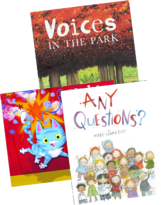
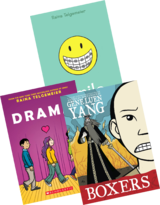
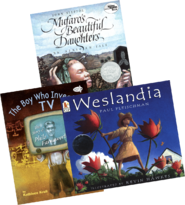

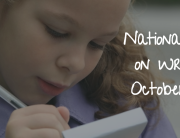
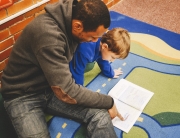
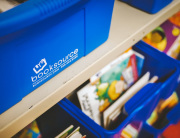

Leave A Comment